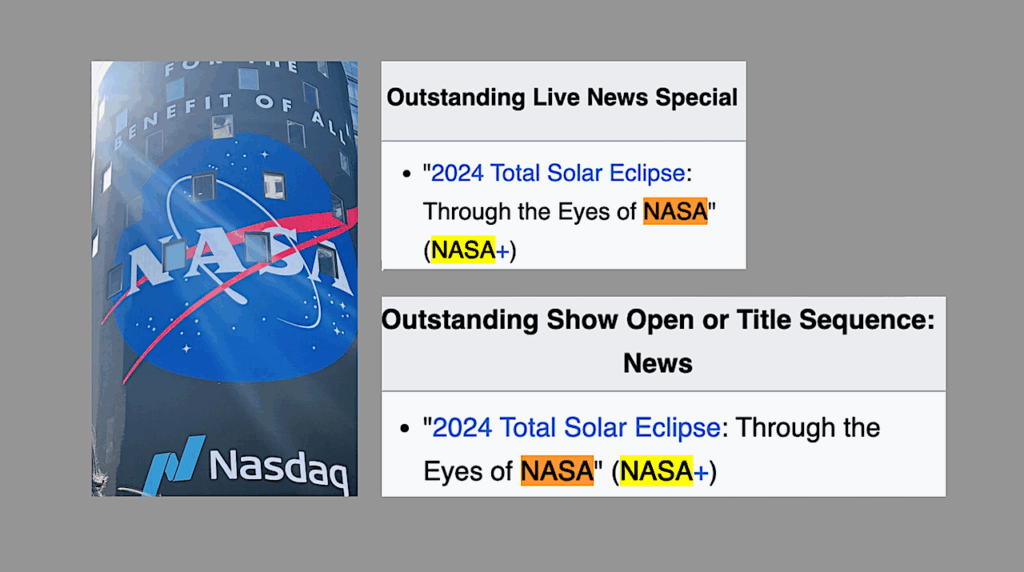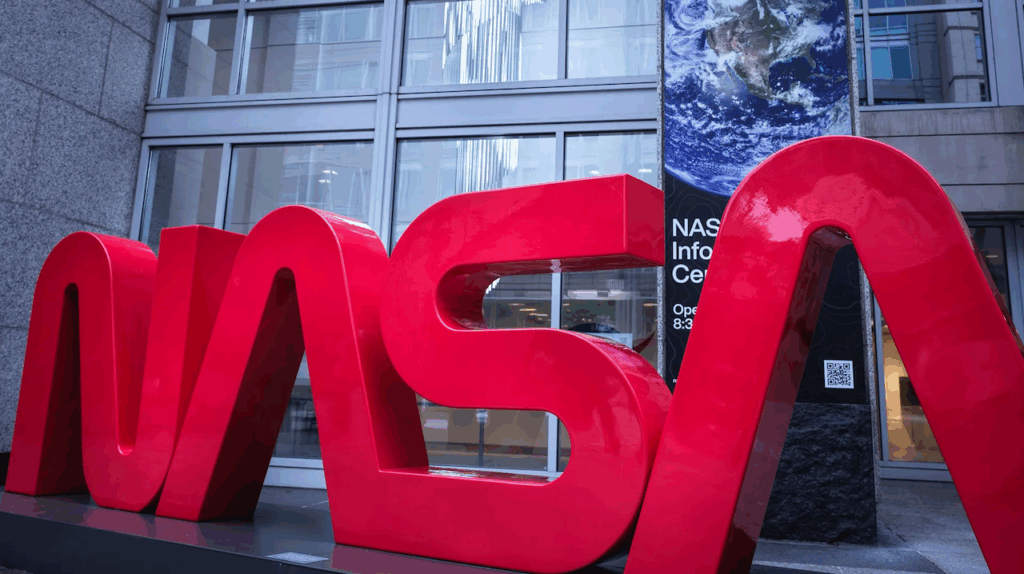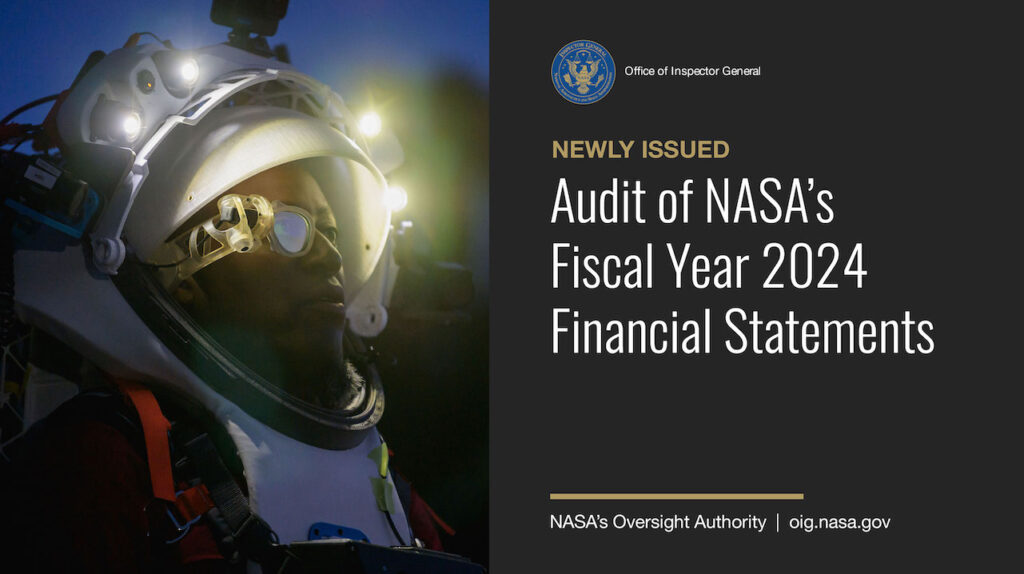OIG Slaps NASA on Un-Needed Stennis Test Stands – Again
 NASA’s Decision Process for Conducting Space Launch System Core Stage Testing at Stennis, NASA OIG
NASA’s Decision Process for Conducting Space Launch System Core Stage Testing at Stennis, NASA OIG
“Similar to the OIG’s conclusions 5 years ago, the OIG found that NASA failed to follow its internal policies or its agreement with the DOD when it decided to spend approximately $352 million to refurbish and test the SLS core stage on the B-2 test stand at Stennis. Moreover, the OIG found that NASA did not adequately support its decision given that refurbishing the B-2 stand will be more costly and take longer than two other possible options: an Air Force test stand at Edwards Air Force Base in California and a test stand at the Marshall Space Flight Center. In addition, although SLS Program managers spent considerable time and money studying the B-2 option, they gave the joint NASA-DOD testing board minimal time to assess the cost, schedule, and risks of the other test stand options.”
NASA OIG: Final Memorandum on the Review of NASA’s Plan to Build the A-3 Facility for Rocket Propulsion Testing (2008)
“We found that NASA’s Upper Stage Engine (USE) Element Manager, located at Marshall Space Flight Center in Alabama, reviewed the J-2X rocket propulsion testing options and selected the A-3 test stand to be built at Stennis without the required formal reviews or recommendations of the NRPTA, or NASA’s RPTMB.”
NASA’s Defunct Project Survives on Mississippi Pork, Bloomberg
“NASA will complete a $350 million tower to test rocket engines for a program that was canceled in 2010. The A-3 test stand will be finished early this year at Stennis Space Center in Mississippi. Its funding survived thanks to Senator Roger Wicker, a Republican from that state who supported the test stand’s completion even though NASA doesn’t need it.”
The NASA Launchpad To Nowhere, Time
“Congress ordered NASA to complete a $350 million rocket-testing structure that may never be used, Bloomberg News reports. The 300-foot tower at the Stennis Space Center in Mississippi was designed to test how the Ares I and Ares V engines would work at high altitudes, for rockets under development that would send people into space and up to the moon. But the project was scrapped after the Constellation program spearheaded by former President George W. Bush was cancelled in 2010.”
Watchdogs hit NASA for spending $352 million in Mississippi on test stand already in Huntsville, Huntsville Times
“Federal watchdogs today criticized NASA for spending $352 million to refurbish a Mississippi test stand for critical upcoming tests on the Space Launch System when cheaper test stands were available faster in Huntsville and California. NASA responded by admitting it didn’t follow its own rules and agreements, but “is confident it made the right decision.”









I’m a big supporter of Stennis, but I thought Shuttle derived heavy lift was supposed to offer benefits to national security space. Missing an opportunity for synergy and cost savings by using the Rocket Ridge at Edwards seems unfortunate. Hell, the sheer historic value of testing the core in one of Von Braun’s stands at MSFC would be awesome too. Oh well…
This decision, coupled with the decision to mothball the J2-X engine after spending billions developing it, points to an even worse problem than the philosophical one regarding the value of heavy lift. It is infuriating to see.
Especially when you look at how many launches you could buy and hardware that could actually advance us.
Deciding which center will get a project generally comes first. The actual strategy for doing the work follows from that. A lot of useful work could have been done with $352M, let alone all the money going into SLS/Orion. Maybe something of value will come of it, but its hard to see what. At this stage in my life, it is depressing to say the least.
That would be a transportation nightmare to get a 200+ feet Core Stage from MAF to the land locked Edwards.
One of the Stennis projects is a test stand for the J2-X engine, rather than an entire stage. The story on it says it will be completed and then mothballed.
Lets go further into that question about transportation-
Yes, the transportation issue would appear from the Apx. B (NASA’s response) to have been crucial in deciding to use Stennis. Still, a sort-of-requirement came about, driving the transport issue, first that the engine testing would eventually be on a full-up 1st stage, multiple engines, and second, that that stage tested would be actual flight hardware for the first flight.
Now back in Apollo, the fully integrated first stage with 5 engines was tested at MSFC on a now defunct test stand (demolished). This is of the scale we are talking here. Later though, for Shuttle, I believe no full up, multiple engine (three) article was ever tested on stands. Only single engines were tested, at Stennis, then the Shuttle/orbiters had engine firings with all three engines at the launch site.
So why would we not go the Shuttle way this time (single engine testing)? That is, testing individual engines, then a rehearsal and full multi-engine firing of SLS at the launch site, at KSC? Single engine testing was the chosen path of Shuttle, avoiding doing the Saturn approach (and the same transport issues) even when the old Saturn test stand still existed and was an option?
More similarly, these SLS engines are Shuttle SSME based, which would bring up the question of why we wouldn’t just test individually again where and how individual SSME’s were tested before (at Stennis) – at the B-1 test stand, minus any major mods. That would have saved most of this money for other purposes off hand, no? Risks later in integration would have been no greater than was taken with Shuttle, no?
I’m missing something here?
Yes, you are missing something. It is called MPTA (Main Propulsion Test Article). It was a orbiter aft fuselage with frame for the rest of the orbit and 3 SSME’s and a flight ET. There were 12 firings, 6 of them over 500 seconds in duration
Still, not a flight article (MPTA). So what would be the rational to make this SLS test a flight article as well?
Yet MPTA was not a flight article?
Obviously, because they were not going to build a dedicated orbiter for it. MPTA used a flight ET and flight SSMEs and the orbiter aft section was built the same as the flight Orbiters.
The S1C used for the Apollo first stage integrated firings was not a flight article either. It was just more efficient technically and financially to integrate the tanks and engines and fire the thing. That S1C stage is the one at the Davidson Center at the U.S. Space and Rocket Center. It may look like a flight stage but it was not.
Yea that is what I thought. The Shuttle people at MSFC called that the “boat tail”. It was used in 1989 as part of the Shuttle C mockup that was built by the Essex corp in 4705. It really showed a high fidelity model of Shuttle C and they stuck a SS Freedom long module AND an Centaur stage in the cargo bay at once…
Hmmm. Or you could make the design modular, design a power pack with 9 engines like that upstart SpaceX and do a full test on a test stand without the full stage. Then do a wet dress rehearsal and hot-fire test at the launchpad. Bet their test stand didn’t cost $352 million. Don’t see what the advantage is of having the tank part of the stage.
Incorrect. Not viable for SLS. SpaceX could afford to lose a vehicle during test flights. Hence that is why they did not test the second stage engine at altitude.
If you can’t afford to lose a vehicle during testing, you can’t afford the program.
False, not every program can lose vehicles.
“Can” is not the issue. Every program DOES lose vehicles, including Shuttle. That’s one reason SLS is not affordable.
As far as I know the S1C test stand is still there. It will be there long after we are dead.
Also, I think that you are incorrect about the Shuttle engine test. I have personally seen the Boattail test article that housed the three engines for testing at Stennis.
I see now…the test stand was never demo-ed as I last heard there were plans. Still, the question remains, why do a full up stage and multi-engine test that is also a flight article, a first flight article at that? Especially with experience in the engines already, from SSME.
ah … I believe it is called make work in my congressional district…
I think I am seeing the crux of this here…was the SLS program unable to afford a test article (engines, stage/tank etc)? That is, the sum of making 1 test article, NEVER TO FLY, plus testing it (savings) at a site like the Air Force (per the IG report), plus the first flight article, would be MORE than one flight article, used for the same testing, albeit the cost (more) of modifying a nearby stand for such test (due to now excluding sites with transport issues given critical flight hardware)? That would imply such an MPTA article would be more than the difference between the options in the IG report?
You are still not seeing it. Most programs now days use flight articles for test purposes. It is rare to build nonflight test hardware. With Test Like You Fly, the process would be to a flight articles for tests vs building unique test articles
Still trying to understand this then. Did “test like you fly” come about as a practice with smaller stages, one’s that did not have the transport (size) issues? And then size issues add to the paradigm, akin to a “test like you fly, near where to fly”? In any case, it would still seem that someone should have done a cost of an MPTA article, to see if it would be more than $200M. In other words there should have been a 3rd option – a cost of (1) an Air Force/MPTA-article option, alongside the other two in the report – the (2) Air Force / flight first stage option (and critical flight hardware transport risks, etc.) and the (3) Stennis / first flight hardware at test-article option.
Something just does not “add up” here.
All the shuttles underwent Flight Readiness Firings with all three engines fired on the actual vehicle and launch pad for 30 seconds.
NASA needs a BRAC. Too many centers, too many people doing make work. Too much of NASA funds spent on infrastructure and staff.
Which one or two-of-kind national test infrastructure would you mothball or worse, then reactivate or rebuild from scratch 5 years later at 10 to 100 times the yearly maintenance cost?
There should be a contest.
Another case of ‘it’s easier to get forgiveness than to get permission’ mindset because there is no accountability for not following policy and nothing happens to NASA management except receiving a slap on the wrist.
Economists preach the Sunk Cost Fallacy. Engineers are more concerned with the catastrophic effects of unstable oscillations.